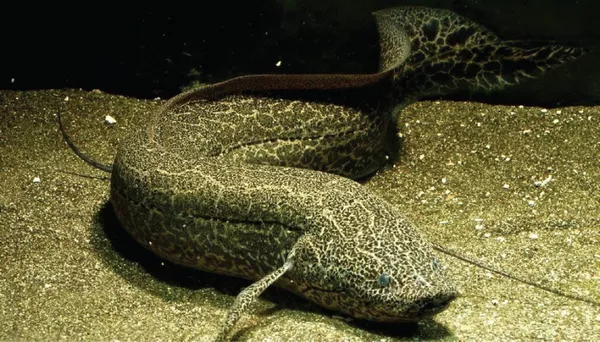Lungfish are a unique group of freshwater fish that are found in tropical regions of Africa, South America, and Australia. These fish have been known to live for exceptionally long periods, with some species living up to 100 years. While the exact reason for their longevity is not fully understood, there are several factors that contribute to their remarkable lifespan.
One of the primary reasons why lungfish live so long is their ability to enter a state of suspended animation when conditions become unfavorable. During periods of drought or extreme temperatures, lungfish can survive for months or even years by burrowing into the mud and secreting a mucus-like substance that helps to keep them moist. In this state, their metabolic rate slows down significantly, allowing them to conserve energy and survive until conditions improve. This ability to enter a state of suspended animation has been linked to their longevity, as it helps to protect them from environmental stressors that could otherwise lead to premature death.
Another factor that contributes to the long lifespan of lungfish is their relatively slow rate of development. Lungfish take several years to reach sexual maturity, and their growth rate is generally slow compared to other fish species. This slow growth rate may help to protect them from age-related diseases and other health problems that can shorten the lifespan of faster-growing species. Additionally, the slow rate of development allows them to build up a strong immune system, which can help to fight off infections and other health issues.
Lungfish also have a unique ability to regenerate their tissues and organs. They are capable of regrowing fins, gills, and even parts of their spinal cord if they become damaged or injured. This regenerative capacity may help to protect them from the effects of aging, as it allows them to repair and replace damaged tissues and organs more effectively than other animals.
Finally, lungfish have been found to have relatively low levels of oxidative stress, which can contribute to age-related decline in other animals. Oxidative stress occurs when the body produces harmful byproducts called free radicals, which can damage cells and tissues over time. Lungfish have been shown to have low levels of these harmful byproducts, which may help to protect them from the effects of aging.
In conclusion, the long lifespan of lungfish is likely due to a combination of factors, including their ability to enter a state of suspended animation, their slow rate of development, their regenerative capacity, and their low levels of oxidative stress. While much is still unknown about these fascinating fish, studying their unique biology could provide valuable insights into the aging process and may even lead to new therapies for age-related diseases in humans.

























